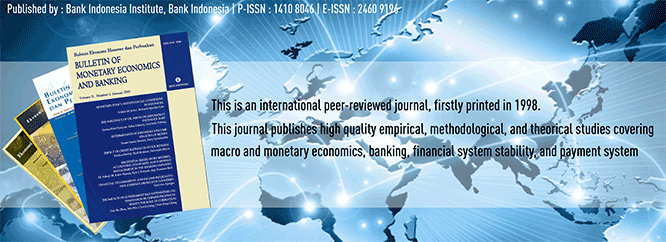
Document Type
Article
Abstract
This paper analyze how we should respond to possible asset price bubbles, especially in view of the various conceptual frameworks proposed based on a core set of scientific principles for monetary policy. Further, efforts have also been made at my end to establish as to how Monetary policy should not react to asset price bubbles per se, but rather to changes in the outlook for inflation and aggregate demand resulting from asset price movements. However, regulatory policies and supervisory practices should respond to possible asset price bubbles and help prevent feedback loops between asset price bubbles and credit provision, thereby minimizing the damaging effects of bubbles on the economy.The general massage of this paper is that credit conditions influence economies enormously and emergency steps to restructure balance sheets through policy revamping are crucial for fixing problems of excessive leverage. This stands in sharp contrast to the view from conventional models - that 'the effects of a worsening of financial intermediation are likely to be limited' and can be handled by interest rate cuts alone.In the alternative regulatory policy approach, we have strived to examine three possible regulatory responses to managing bubbles: portfolio restrictions; adjustments in capital requirements; and adjustments in provisioning requirements.JEL Classification: E58, E63, G15Keywords:financial crisis, asset price bubble.
Recommended Citation
Chakraborty, Ms. Sagarika and Banerjee, Mr. Soumya
(2009)
"FINANCIAL CRISIS IN THE DEVELOPING WORLD - POST THE US "ASSET PRICE BUBBLE DEBACLE" - A NEW WAY FORWARD,"
Bulletin of Monetary Economics and Banking: Vol. 12:
No.
1, Article 3.
DOI: https://doi.org/10.21098/bemp.v12i1.465
Available at:
https://bulletin.bmeb-bi.org/bmeb/vol12/iss1/3
First Page
5
Last Page
26
Creative Commons License

This work is licensed under a Creative Commons Attribution-NonCommercial 4.0 International License
Country
India
Affiliation
ICICI Bank Limited, Kolkata, India







